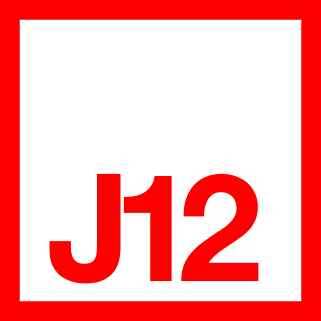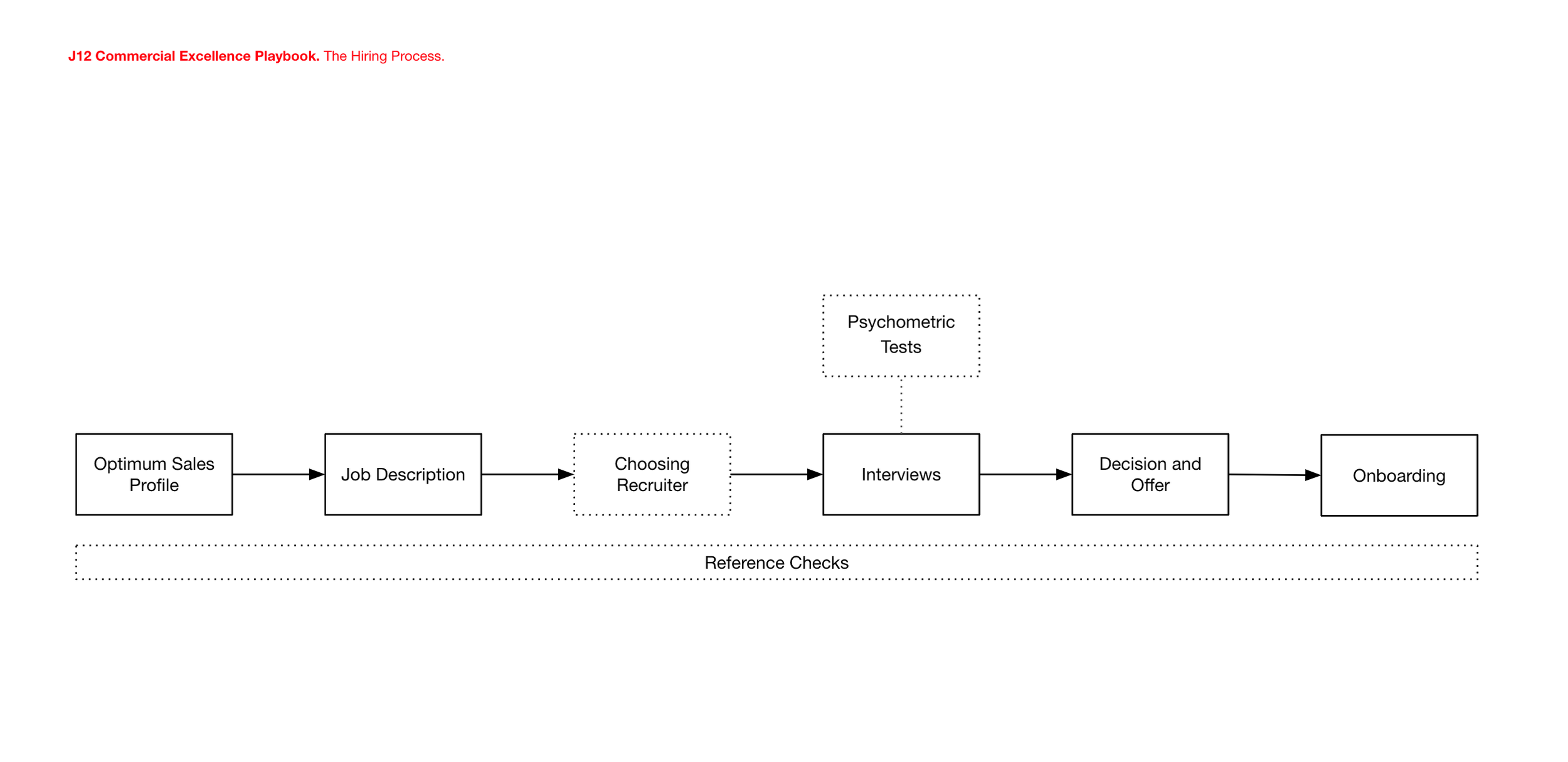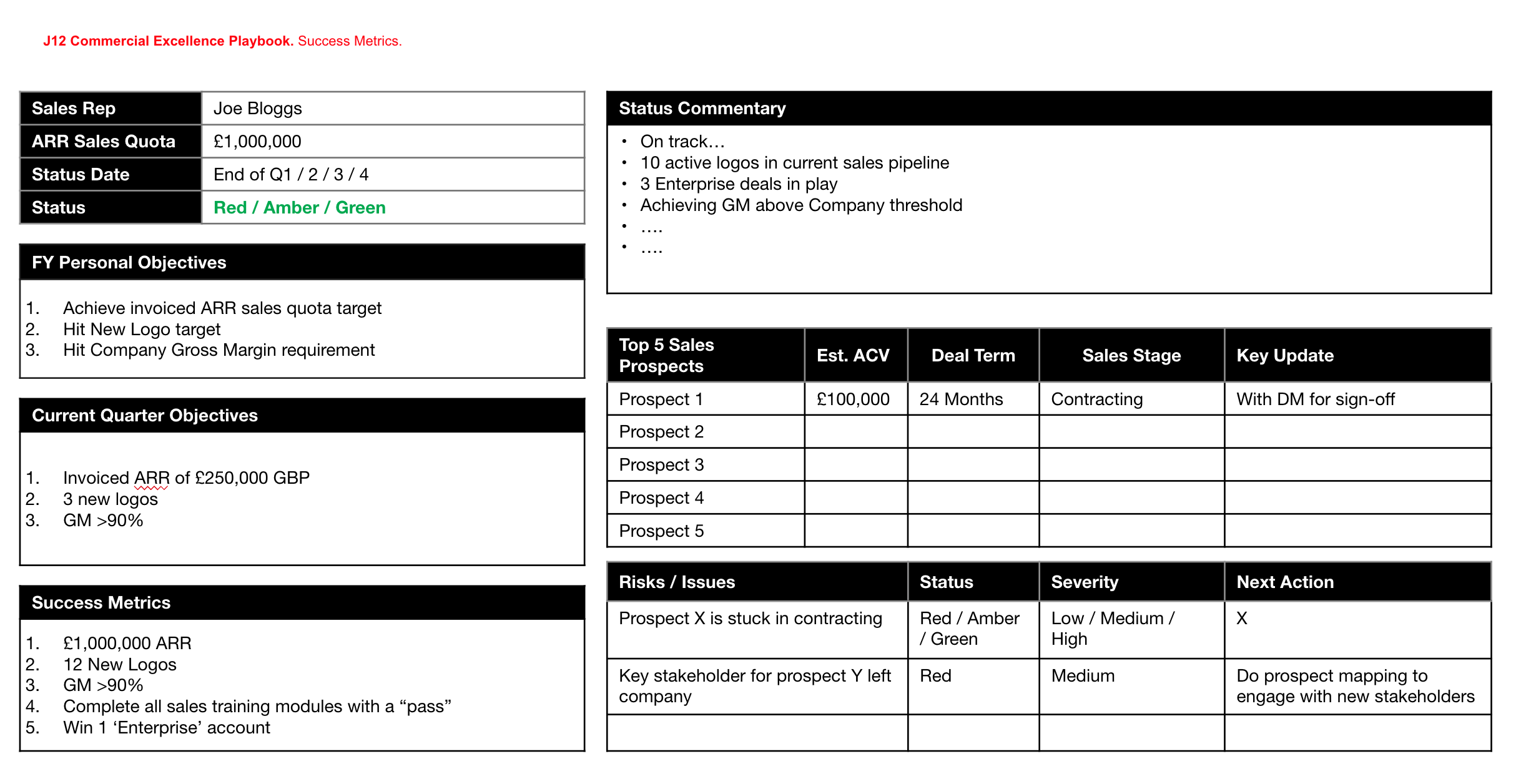The Principles of Attracting and Retaining Top Talent
Part 4/10
The foundation for any great company is the team that works within it. Teams are made up of creators, innovators, leaders, mavericks, strategists, doers, thinkers — the list goes on. But individual talent is not enough to carry the weight of an entire organisation. What makes a great team is the strength of the collective and alignment around a common goal. Team dynamics are important, and none more so than when you build your sales force.
Hiring is tough. The right hires unlock potential and value in customers, as well as in the team working alongside them. Good people are infectious, and I have found sales people thrive off healthy competition, peer-to-peer learning and the thrill of the chase. Designing a hiring process that surfaces, assesses and validates candidates thoroughly through the lens of your defined profile criteria needs careful thought. Building a sales team is one of the most important elements of scaling at seed stage, and while there is no methodology that will guarantee you successful hires every time, these are the 5 principles I have found to attract and retain top talent:
A Well Designed Hiring Process
The Optimum Sales Profile
Interview
Aspiring Sales Team Dynamics
Setting Incentives
…
A Well Designed Hiring Process
You need to be creative around attracting talent. The companies that are successful in retaining talent are those with a strong recruiting mindset. Although you should not rule out working with external recruitment firms, a high-quality hiring process is useless without a leader to drive it and as no one knows your company better than you do, the best person to sell it, and the opportunity, is you.
Building a high-performing sales team aligned with your company goals is one of the most important elements of long-term growth. How quickly you can scale is dependent on how quickly you can hire, and the right hires at the right time will transform your company. The starting point for any hiring process is tapping into, and exhausting your existing network, including that of your board and advisory group. The best candidates are often those known and referred.
When you make a successful hire, always ask the candidate to recommend 2–3 other sales individuals they can vouch for. This is an efficient way to identify sales talent and engage and hire directly.
Whenever you can you should have the ambition to hire in pairs and/or cohorts as it provides the benefit of peer-to-peer learning and sharing the onboarding experience. It can also create some healthy competition whilst de-risking things slightly if a hire goes wrong (and they will).
External search firms obviously have a place. Recruiters can be an effective extension of your internal hiring efforts. Although you know your company better, they might have the ability to tap into networks, industries, geographies and functions needed to find relevant profiles. Once you decide to hire a recruiter, they need to be thoroughly briefed, managed and targeted at the right roles selectively — sales leaders, managers, enterprise sellers and senior roles — are often the sweet spot. These are roles typically a little further down the line, once product-market-fit has been established. Nevertheless, if you do engage a recruiter early on, invest time in ensuring the terms reflect the early stage you are in (and constraints you have on cash and budget).
Whether you use an external search firm or not, a well-designed hiring process that is easy to follow allow you to not get lost on the way nor spend time on tasks that, in return, are unprofitable for you in the long-term.
Further reading: The Hiring Process by a16z, 6 Strategies to Address the Challenge of Sales Hiring by Korn Ferry.
…
Optimum Sales Profile
In the same way you define your Ideal Customer Profile you should apply a set of criteria to your optimum sales profile that you and your stakeholders agree on. An optimum sales profile should outline behaviours and characteristics you are looking for, the mission and outcomes of the job, as well as what the hires are expected to accomplish over the upcoming months. This can be used when creating a job description that speaks to the types of personalities that will thrive in the work environment you have created, while serving the needs of your company. Crafting an optimum sales profile will also help towards a an objective assessment of candidates. An individual at work is made up of many different dimensions — the educational, social, personal, professional and cultural — so begin by asking yourself and your team some of the following questions:
Do they have a growth mindset? Can they evidence this?
What have they done before that will make them successful in this role?
What outcomes do you want them to drive?
Do they need experience in a specific industry?
What makes them hungry i.e. why are they motivated to succeed?
Why them? What makes them right for the role?
Why does this particular role and opportunity stand out?
Can they share an example of success? Equally, can they share an example of failure and what they learnt from it?
What are their values and how do they hold themselves accountable?
What do they like to do for “fun” that complements their working life?
Once you have your optimum sales profile mapped out you have insurance that will help you stay on the right track when starting to assess candidates.
Further reading: Inside Sales Best Practices: HubSpot — A Case Study by David Skok.
…
The Interview
A well-run interview should begin by setting the expectations on performance, targets and the compensation framework. I have seen it is also beneficial to have a minimum ‘3 touchpoint rule’ where you intentionally select who from your team interviews the candidate and give everyone involved a clear criteria to assess. Do not shy away from leaning on your advisors and board for validation of candidates too.
The magic formula to a good interview process is seeking the personality traits that great sales people tend to have. Some of the characteristics I have seen consistently in high-performing sales individuals, regardless of sector or business model are resilience; curiosity; empathy; sociability; hunger; confidence; affability; creativity; analytical skills; discipline; attentiveness; leadership.
Other behaviours you should be looking for include entrepreneurial mindset; relationship building; strong work ethic; interest in the product as well competing products; active listening; objectiveness in approach and assessment.
Consider introducing psychometric tests to the interview process. These are created to evaluate intelligence, knowledge and personality traits, and measure different mental capacities. The tests are done under time constraints to further understand how people perform under pressure. Introducing these to the hiring process can both save you time and money, but it also gives candidates an equal opportunity. From experience, psychometric test results should be a validation point in the process, but it is not necessarily a “go/no-go” factor.
Referencing should be done throughout the entire hiring process. This part is often overlooked, yet critical to understand who you are hiring and what the candidate is like to work with. You should not settle for the references the candidates provide, but do your own soft back-channel referencing and try to triangulate within your own network. Referencing, when done thoroughly, can significantly mitigate risk in hiring and round-out your due diligence process. When running references always check the following:
Validate the information from the interview.
Learn about how the candidate works, both strengths and weaknesses.
Specifically check the candidate ‘fit’ for a start-up environment’
Further Reading: Top 20 interview questions for sales reps (+5 bonus tips) by Melanie Taube, Psychometric Testing vs Structured Interviews by Hubert.ai.
…
Team Dynamics
Team dynamics are key to driving better individual performance. This does not necessarily mean that all individuals should be treated the same. As mentioned, setting clear expectations around roles and what success means in them should be reinforced continuously throughout the hiring process. The culture within the sales team should foster hunger, ownership and accountability e.g. successes and failures should be shared as well as the insight on competitors. The crafting of individual targets should be done in collaboration with the broader team, set to encourage the desired behaviours and aligned fully with company goals and targets.
A sales team should be built holistically. Sales is a highly competitive world where competitiveness is the key to fostering a high-performing culture. To become great at sales, you must outsell your competition. And competition comes in many forms; it might be a peer, another team, or another product. So you will get the most out of your sales organisation, and foster hunger amongst the team, by making sure there is also internal competition created through bonuses, leaderboards, social events, prizes and so on. There are endless ways to gamify sales so as to create a healthy level of competitiveness amongst the team.
…
Sales Incentives
Compensating sales reps to incentivise them to deliver is a difficult task, but there is arguably no single thing you can do as a founder that significantly correlates with success other than a compensation plan done well. From the base salary to commissions, quotas to on-target earnings, simplicity and transparency should be the ambition when crafting plans. A starting point and good barometer is a plan designed to enable both the company and the individual to do a straightforward calculation of projected commission earnings for any given period, at any point in time.
Initially you might begin with a bonus plan for individuals that is based on deliverables. After all, you are unlikely to have historical data or reference points to set targets, quotas and other KPIs. For early-stage companies with no benefit of history or data based on norms to lean on, in the first year it makes sense to set a % of salary as a bonus amount and tie this to agreed targets and milestones (the deliverables). Evaluation can be part subjective (founder) and objective (sales data) to judge success. Above all else, keep it simple and within the control of the sales rep to achieve.
Once you have established Sales-Market-Fit and have some sales funnel data behind you (ACV, sales cycle, conversion rates etc), you can transition to a sales target/quota/measurement model. This can be tied to underlying KPIs and a simple 1-page quarterly tracker.
Once sales KPIs and targets are agreed, write down the sales commission plan (ideally a 1-pager like the above example) supported with a simple commission calculator tool allowing reps to estimate commissions from due or projected sales (see ‘Further readings’ below).
The final step is to implement your sales commission plan into your CRM. All the leading CRM tools have generally intuitive and powerful commission modules to manage this with appropriate controls and governance. It will automate the reporting and tracking, enable you to avoid “human error” creeping in and provides a real-time accessible record to individuals reps, managers and leadership at any given time.
Further readings: How to Create an Effective Sales Incentives Program by Steli Efti, Simple Math to Set Up a Sales Team by David Sacks, 10 Typical Sales Commission Structures To Motivate Reps by Spotio, The Right Way to Use Compensation by Mark Roberge, Compensation Calculator by Hubspot.
…
Access the google slide templates here:
The J12 Commercial Excellence Playbook — All Template Slides (2022).





